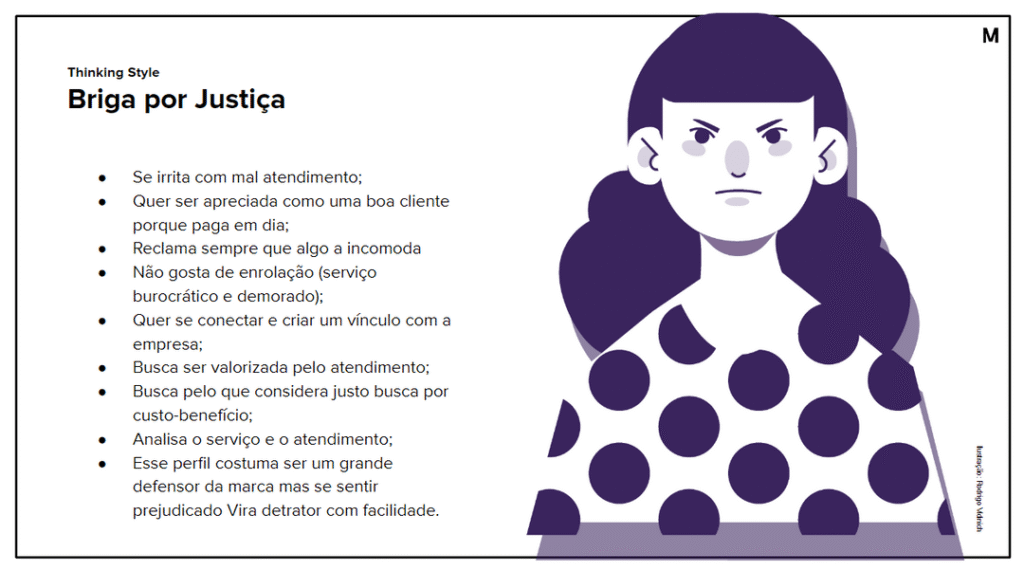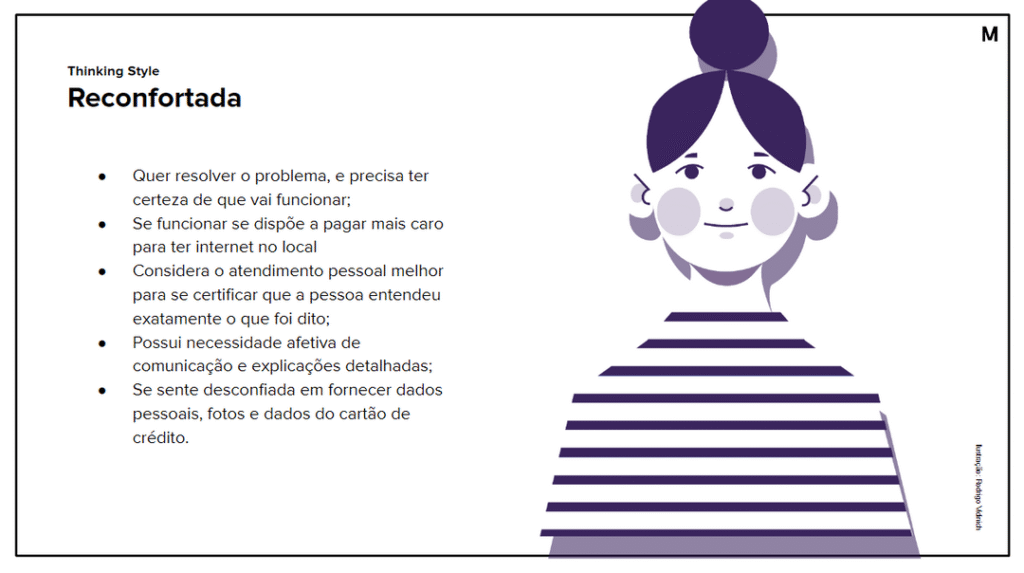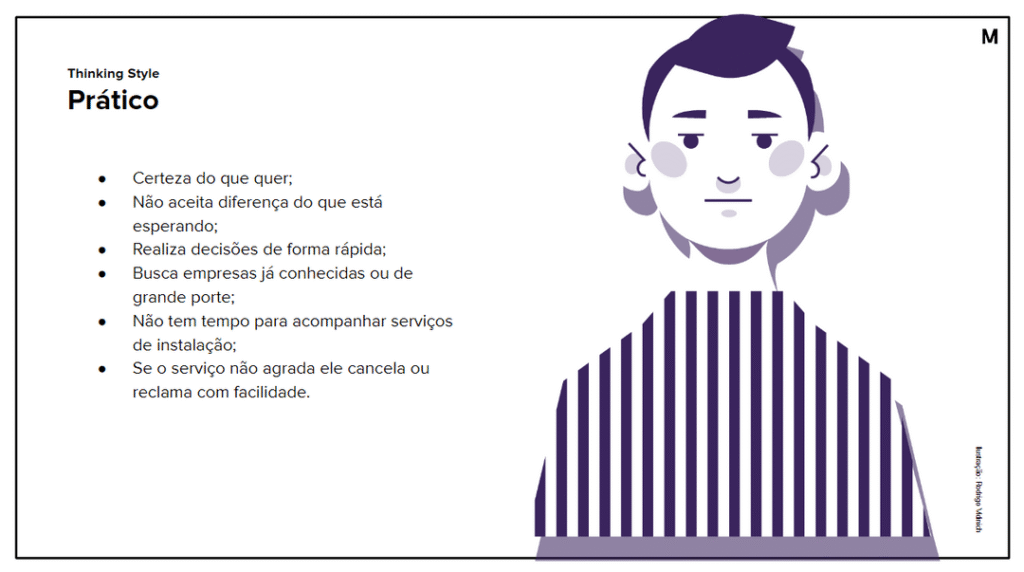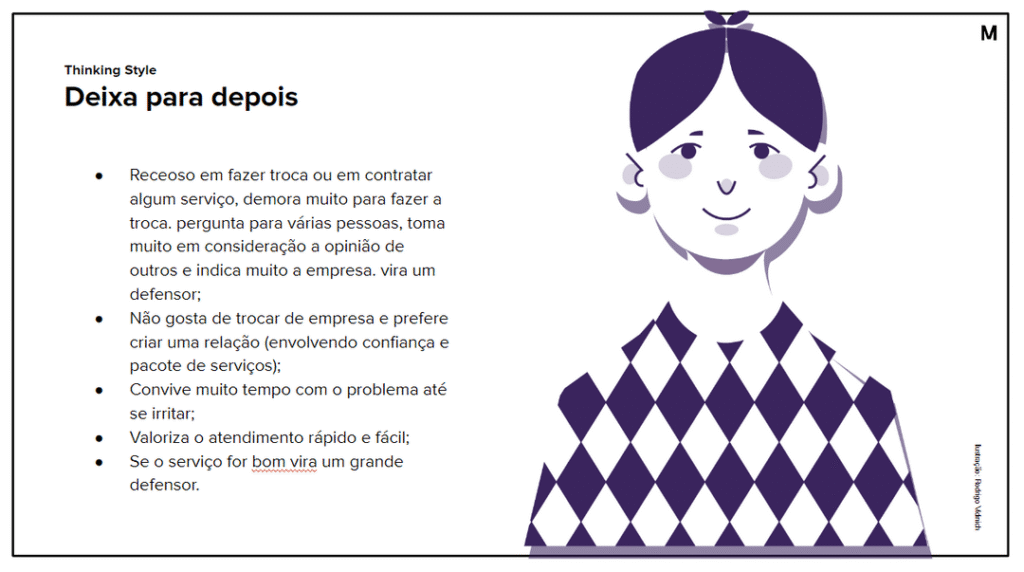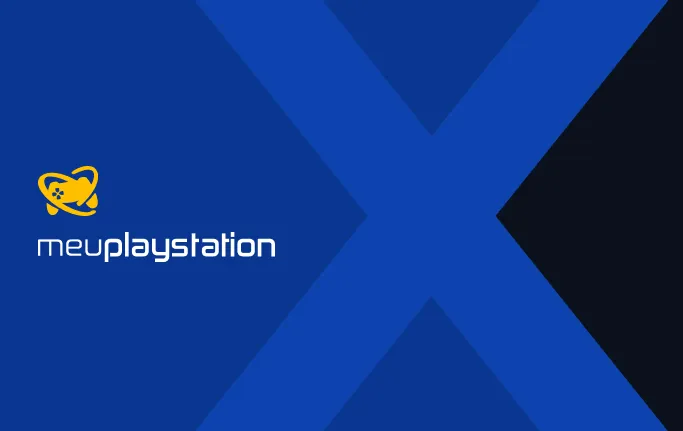// CASE
Conecte.ai
Conecte.ai specializes in creating digital tools that help regional internet providers grow their online sales.
// Solutions
- Service Design
Conecte.ai specializes in creating digital tools that help regional internet providers grow their online sales. With expertise in user communication and digital interaction management, they strengthen the e-commerce experience.
// Project Impact
For the first time, the company gained a deeply empathetic understanding of who its internet service customers are and how they behave. This insight made it possible to design solutions built around the real needs of diverse users.
// Key Challenge
Make it possible to strategically develop solutions by understanding the demands and tasks of internet service users.
// Solutions
- Service Design
To refine its solutions, the company began a phase of exploration and deeper understanding of internet users, with the goal of delivering tools that strengthen communication and expand solution offerings for clients and end users.
To design solutions that truly matter to end consumers, we mapped out the entire journey of contracting an internet plan. By uncovering unmet user needs, we built an environment for innovation. The creation of a mind map, shaped with user input, became the key to driving innovation through empathy, ensuring solutions are tailored to their needs.
To gather data empathetically, we used the problem-space research methodology created by professor Indi Young. It begins with framing a core question that reflects the purpose we are exploring. This seed question then guides a listening session, where every topic raised by the participant is followed and examined. The term ‘germinal’ is used because this initial question grows like a seed, as the participant stays anchored in their purpose and related memories.
We conducted deep listening interviews with different users, considering their stories, perspectives, and reactions connected to the purpose at hand. Purpose itself is broadly defined, it can relate to goals, ambitions, or anything a person is striving to do or achieve. It may last an hour, a day, a week, a decade, or even a lifetime, the duration is irrelevant.
Following the interviews, we gathered concepts, ideas or thoughts expressed in phrases or sentences. These concepts can appear repeatedly, overlap, or even remain implicit. For this project, we surfaced them through full interview transcripts, which enabled us to identify behavioral patterns tied to purpose across participants, represented as distinct thinking styles.
Thinking styles describe how individuals process information while carrying out tasks. They reflect recurring ways in which users approach a purpose, how they learn, structure their thoughts, apply values, solve problems, make choices, plan, and communicate. These thinking styles act as archetypes, independent of demographics, capturing different cognitive approaches to purpose.
Developing the thinking styles allowed us to classify and emphasize the tasks of each group within the mental model map. This approach enables the map to be interpreted with attention to the distinct needs of each thinking style.
The Mental Model Map is an affinity diagram of user tasks, organized into mental spaces, clusters of related activities. Inside the map, each window within a task tower is linked to thinking styles and tied to a defining profile, such as a professional group or demographic trait. Unlike traditional approaches, task towers reveal exactly how a group addresses a task. The greatest value lies in the fact that every action mapped comes directly from users, removing assumptions and subjective opinions that fail to reflect real solution use.
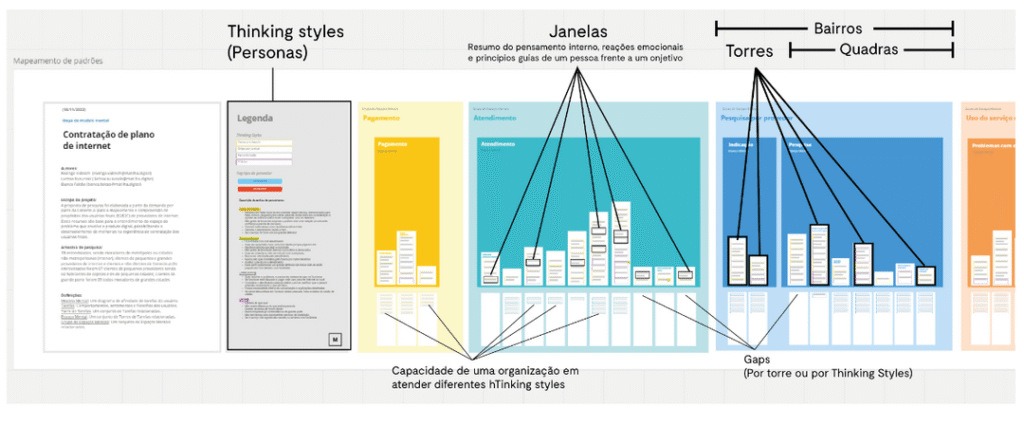
Therefore, Matilha helped deepen the understanding of users by mapping journeys with activities tailored to each archetypical group. Together with actions designed for each stage, we expanded solutions, created new features, and adapted languages and flows.

Organized in an empathetic and visual format, and designed for internal team use, the research provided democratic and straightforward access to users’ ways of thinking. This approach accelerated empathy-building and outlined a clear innovation roadmap grounded in unmet user tasks.

